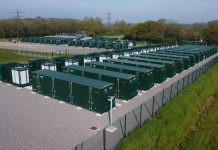
At The Energyst Event, Marissa Granath, Gateshead Council’s energy business development officer, outlined how the local authority is providing cheaper heat and power to commercial and residential customers, and funding front line services.
Gateshead Council started thinking about a town centre heat network in 2010. Today, it has the heat network, but also provides power to local businesses through a private wire, and earns grid balancing revenues via a 3MW battery.
As such, the energy centre is delivering benefits greater than the sum of its parts – and the council will apply the learnings to its next district energy schemes, which are already in planning.
For other local authorities mulling similar projects, Granath offered succinct advice: Focus on customers and benefits over pipes, wires or technologies.
Moving target
The Gateshead project evolved over time, explained Granath.
“For us, none of the individual elements stacked up by themselves. Not the heat network, not the private wire, not the battery storage. But bringing them together made the business case viable,” she said.
“Because we have neither a huge heat load nor a huge heat source, we didn’t have a viable district heating network. But adding the private wire enables us to sell electricity [from the centre’s twin CHPs] to our customers rather than back to the grid. We make more money as a result and our customers get a cheaper price, creating a win-win situation,” Granath explained.
“The private wire makes it lot more complicated, but it is what made the business case viable.”
The Council then took the decision to add battery storage, “which made the economics even better,” said Granath. “We earn revenue from grid services at the moment, but in future we have some large developments coming on to the network. So [the batteries] mean we can manage that peak demand and get the most out of the asset.”
Which is why Granath says focusing on customer benefits and outcomes rather than technologies is crucial.
“Schemes like this are not without their challenges. Communication and internal buy-in is key to getting it over the line. For a local authority, that is senior leadership but also political leadership.”
Talking about outcomes rather than technologies, and attaining buy-in means, “when new opportunities come along, such as battery storage, you can get them approved quite quickly because you can tell the story of how it will deliver benefits”, said Granath.
Benefits and returns
The district heating network investment was £25m over a 40-year lifespan, with the council currently forecasting a return in years 16/17, said Granath.
It provides lower cost, lower carbon heat to 12 customers, mainly public and commercial buildings, plus 350 social housing customers. Via the private wire, the council currently supplies ten customers with electricity.
“But it is not just about the numbers,” said Granath. “We are delivering low cost heat to some of the most vulnerable people in Gateshead; reducing energy costs for the council; improving the viability of local businesses by reducing their energy costs and attracting development to the town centre by providing connection-ready access to a lower carbon, lower cost source of heat and power.”
Moreover, she said, “we have got this really cool building, which is contributing to the redevelopment of the town centre and helping to put Gateshead on the map”.
Risk management
Granath said becoming an energy supplier “is really hard” and that the council must also think carefully about managing risk.
For example, it gives greater discounts to customers that take longer-term contracts. “But there are things you can’t foresee,” she said. The ‘Beast from the East’, for example, created “insane” gas prices.
“In some ways, the good thing about being a local authority is that you can take a longer view. But the further out you look, the more risk is inherently ‘baked in’ to your business case. So it is not easy.”
However, Granath said the council is “more than happy” to share learnings and urged anyone planning similarly integrated heat projects to get in touch.
What’s under the hood
 The Gateshead scheme includes: 2.5km of district heating network; 5.5km of high voltage private wire network and 3MW of battery storage. The energy centre houses 2 x 2MW CHP engines, 15MW worth of back up boilers, plus 250,000 litres of hot water storage housed in the pink containers that make the scheme instantly recognisable.
The Gateshead scheme includes: 2.5km of district heating network; 5.5km of high voltage private wire network and 3MW of battery storage. The energy centre houses 2 x 2MW CHP engines, 15MW worth of back up boilers, plus 250,000 litres of hot water storage housed in the pink containers that make the scheme instantly recognisable.
Related stories:
Centrica to use Gateshead’s 3MW battery for local and national balancing services
Gateshead signs £1m demand response contract with Flexitricity
Follow us at @EnergystMedia. For regular bulletins, sign up for the free newsletter.



